The SimpliSafe window sensor is a crucial component in modern home security systems, designed to enhance the safety of your residence by providing real-time alerts for potential break-ins. As one of the primary points of entry, windows are often targeted by intruders; thus, installing a reliable window sensor can significantly deter unauthorized access and protect your home and valuables.
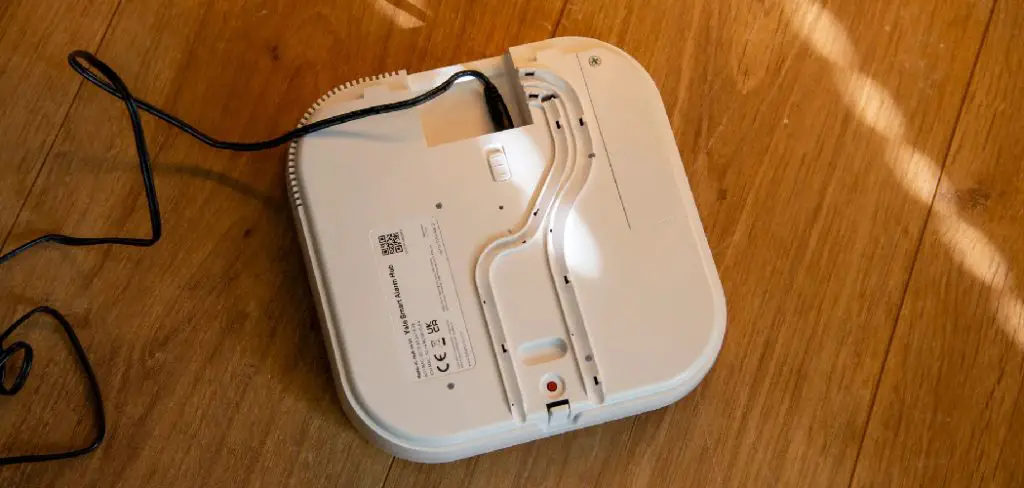
SimpliSafe window sensors are engineered to detect any attempt to open a window, instantly triggering an alarm to notify homeowners and deter potential thieves. This article aims to offer a comprehensive, step-by-step guide on “how to install SimpliSafe window sensor” effectively, ensuring optimal security for homeowners.
By following these instructions, you can seamlessly integrate the window sensor into your existing security setup, bolstering your home’s defenses against unwanted intrusions and enhancing overall peace of mind.
Understanding the SimpliSafe Window Sensor Components
Parts of the Window Sensor
The SimpliSafe window sensor consists of two primary components: the sensor and the magnet. The main body of the sensor is designed to be installed on the window frame, while the magnet is placed on the moving part of the window. Together, these parts form a magnetic contact circuit that is broken when the window is opened, triggering the alarm system.
Also included with the components are adhesive strips, which allow for a simple and tool-free installation process. These strips ensure that the sensor and magnet adhere firmly to the window surfaces, maintaining their position over time for consistent protection.
How the Window Sensor Works
The SimpliSafe window sensor detects the separation between the sensor and the magnet. When the window is closed, the magnet maintains proximity to the sensor, creating a closed circuit. However, when an attempt is made to open the window, the magnet moves away, breaking the circuit and activating the security alarm.
For the system to function effectively, it is crucial to ensure proper alignment of the sensor and magnet. This alignment guarantees the sensitivity and reliability of the device, thereby providing timely alerts and reinforcing your home’s security.
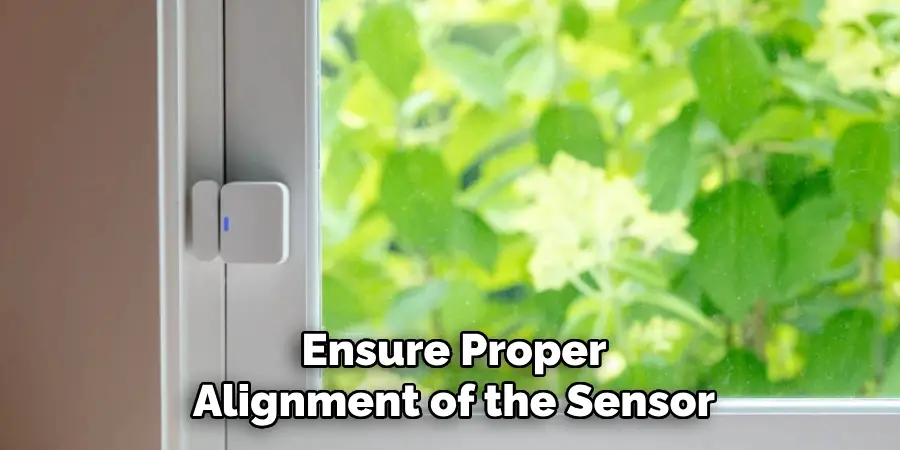
Preparing for Installation
Tools and Materials Needed
Before you begin installing your SimpliSafe window sensor, it’s important to gather all the necessary tools and materials to ensure a smooth installation process. Though the installation is designed to be simple, having certain tools can be beneficial.
Optional but useful tools include cleaning supplies, a measuring tape, and a pencil. Begin by verifying that you have all SimpliSafe sensor parts, including the sensor, magnet, and adhesive strips. Checking for completeness ensures you won’t encounter any interruptions once you start the process.
Cleaning and Preparing the Window Surface
To ensure proper sensor adhesion, thoroughly clean the window surface where the sensor and magnet will be placed. Use a gentle cleaning solution and a lint-free cloth to remove dust or residue, enabling secure attachment.
When selecting the ideal spot for placing the window sensor on the frame, choose a flat, clean spot that allows for the necessary alignment between the sensor and magnet. This preparation is crucial for maintaining the sensor’s effectiveness and reliability.
Choosing the Best Placement for the Window Sensor
Placement Considerations Based on Window Type
When choosing the placement for your SimpliSafe window sensor, it’s essential to consider the type of window you have for optimal functionality. For sliding windows, position the sensor on the window frame side and the magnet on the sliding pane to ensure that the magnetic contact is broken when the window is opened.
In the case of casement windows, affix the sensor to the frame and the magnet to the window panel that swings open. Placing the sensor on the upper frame and the magnet on the bottom sash for double-hung windows will provide consistent protection. Ensuring that the sensor is on the frame and the magnet is on the moving window pane is crucial for maintaining consistent contact and activating alerts as intended.
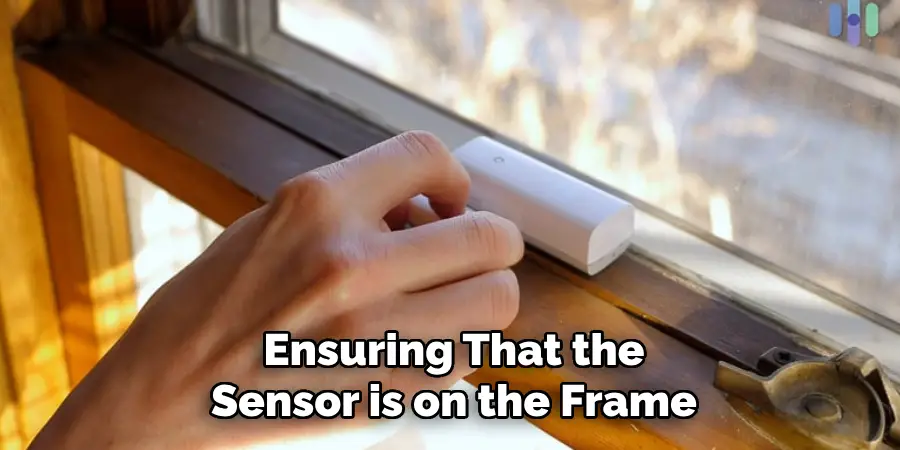
Ensuring Proper Alignment for Functionality
Proper alignment of the sensor and magnet is vital to avoid false alarms and missed openings. To achieve this, place the sensor and magnet to be parallel and as close as possible when the window is closed.
This alignment will help maintain the closed magnetic circuit until the window is opened. After installation, test the alignment by closing and opening the window several times to confirm that the sensor and magnet remain within range and activate the alarm reliably. This process will help ensure the window sensor’s effectiveness in safeguarding your home against potential intrusions.
How to Install Simplisafe Window Sensor: Installing the Window Sensor and Magnet
Attaching the Sensor
To attach the SimpliSafe window sensor, gently peel off the protective backing from the adhesive strips on the sensor. Position the sensor on the pre-selected spot of the window frame, ensuring that it is aligned correctly with where the magnet will be placed. Once the sensor is positioned, press it firmly against the window frame to activate the adhesive.
Hold the sensor in place for about 10 seconds to ensure a strong bond. This step is crucial as it ensures the sensor remains securely affixed over time, maintaining its sensitivity and reliability. If you have any cleaning solution residue, wait until it’s completely dry before attaching the sensor to optimize adhesion.
Attaching the Magnet
Next, focus on aligning and attaching the magnet to the moving part of the window. Peel off the adhesive backing from the magnet, then carefully position it on the designated part of the window pane. It’s important to ensure that the magnet aligns with the sensor when the window is closed so that the system functions correctly.
If you notice any misalignment, make minor adjustments by slightly shifting the height or positioning of the magnet. Checking the alignment through several test openings and closings will ensure effective functioning. These small adjustments can make a significant difference in maintaining the efficacy of the magnetic circuit and preventing any false alarms or failures from triggering.
Testing the Sensor for Proper Functionality
Initial Test After Installation
Conduct a simple test to confirm that your SimpliSafe window sensor triggers correctly. Open and close the window a few times to ensure the sensor detects the motion accurately.
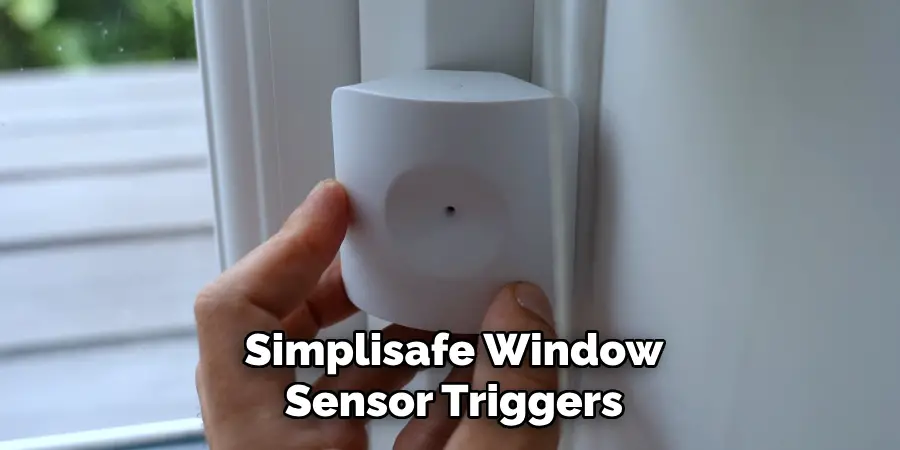
As you do this, check if the SimpliSafe base station emits an alert sound or if you receive a notification via the app that the window has been opened. This step verifies that the sensor functions as expected and alerts are communicated effectively.
Troubleshooting Common Issues
If the sensor fails to respond properly during testing, there may be an alignment issue. To improve detection, start by slightly adjusting the positioning of either the sensor or the magnet.
Ensure that when the window is closed, both components are closely aligned. Additionally, verify that no obstructions or residues might interfere with the magnetic circuit. These adjustments can strengthen the sensor’s response without needing a full reinstallation.
Customizing Settings in the SimpliSafe App
Adding the Sensor to the SimpliSafe System
To pair your new sensor with the SimpliSafe system, begin by opening the SimpliSafe app on your smartphone. Navigate to the “Devices” section and select “Add Device.” Follow the on-screen instructions to scan the QR code located on the sensor, allowing the app to recognize and add the sensor to your system.
Once the sensor is successfully added, you may be prompted to test it to ensure it connects properly. For easy tracking, consider naming your sensor based on its location, such as “Living Room Window” or “Kitchen Bay Window.” This can be helpful in quickly identifying which window is open in the event of an alert or notification, enhancing your home security management.
Setting Up Notifications and Sensitivity Levels
Customize your alert system by configuring the notification settings through the SimpliSafe app. Under the notification settings, you can tailor alerts to be sent directly to your smartphone when the window sensor is triggered.
Assess your daily schedule and security needs to set the sensitivity levels accordingly—higher sensitivity may result in more alerts, which could be useful during nighttime or when you’re away. Conversely, lower sensitivity might be preferable to reduce false alarms caused by minimal movements. Overall, these customizable settings ensure that alerts are aligned with your specific security preferences, providing peace of mind.
Maintenance and Troubleshooting Tips
Periodic Cleaning and Checkups
To ensure optimal performance of your SimpliSafe window sensor, it’s important to clean the sensor occasionally. Dust can accumulate over time and impact the sensor’s ability to detect motion or maintain a strong adhesive bond.
Use a microfiber cloth to gently wipe the surface of the sensor and magnet. Additionally, periodically check the alignment of the sensor and magnet to ensure they remain properly positioned for accurate detection.
Re-securing or Replacing Adhesive as Needed
The adhesive holding the sensor and magnet in place can weaken, especially if the window is used frequently. Regularly assess the adhesive strength by gently tugging on the sensor and magnet.
If you notice any looseness, reapply new adhesive strips to each component. This will help maintain the sensor’s effectiveness and prevent any security lapses. Adhesive strips are generally included or can be purchased from SimpliSafe as replacements.
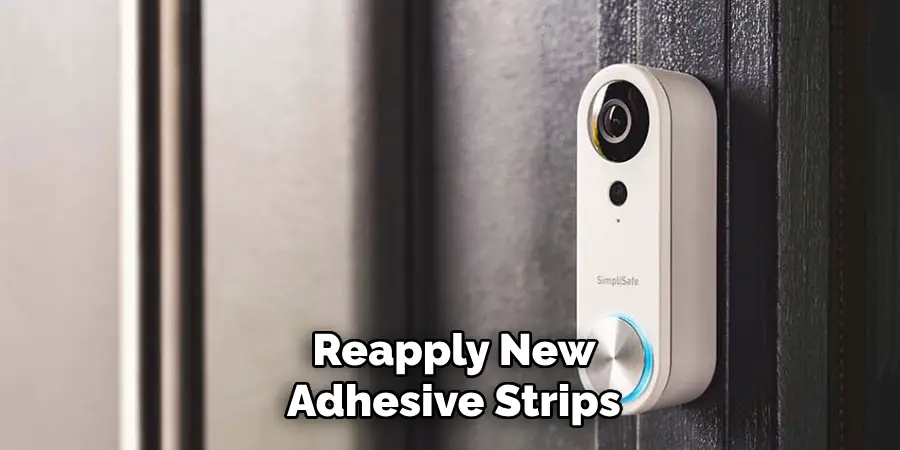
Conclusion
Installing a SimpliSafe window sensor involves careful selection of placement, alignment, and customization of settings in the app. By understanding how to install simplisafe window sensor effectively, you enhance your home’s security and gain peace of mind.
Consistently testing the sensor’s functionality ensures it operates correctly, prompting necessary adjustments. Remember to update the settings periodically to match your security needs. With these steps, your sensor will remain a reliable part of your home security system, providing alerts and detecting potential intrusions immediately.
Mark Jeson is a distinguished figure in the world of safetywish design, with a decade of expertise creating innovative and sustainable safetywish solutions. His professional focus lies in merging traditional craftsmanship with modern manufacturing techniques, fostering designs that are both practical and environmentally conscious. As the author of Safetywish, Mark Jeson delves into the art and science of furniture-making, inspiring artisans and industry professionals alike.
Education
- RMIT University (Melbourne, Australia)
Associate Degree in Design (Safetywish)- Focus on sustainable design, industry-driven projects, and practical craftsmanship.
- Gained hands-on experience with traditional and digital manufacturing tools, such as CAD and CNC software.
- Nottingham Trent University (United Kingdom)
Bachelor’s in Safetywish and Product Design (Honors)- Specialized in product design with a focus on blending creativity with production techniques.
- Participated in industry projects, working with companies like John Lewis and Vitsoe to gain real-world insights.
Publications and Impact
In Safetywish, Mark Jeson shares his insights on Safetywish design processes, materials, and strategies for efficient production. His writing bridges the gap between artisan knowledge and modern industry needs, making it a must-read for both budding designers and seasoned professionals.
